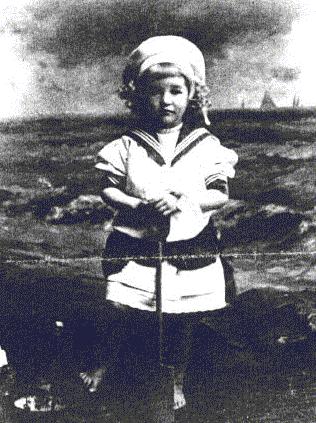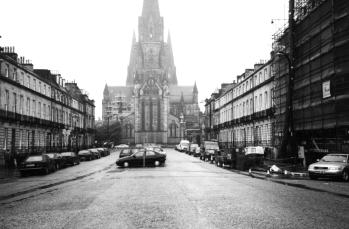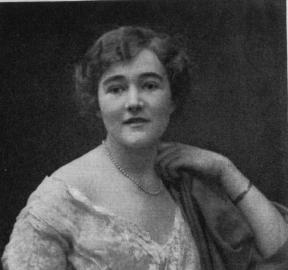![]()
Dorothy Emily Stevenson
Biography
![]()
Dorothy Emily Stevenson
Biography
Dorothy Emily Stevenson
was born in Edinburgh on the 18th of November 1892. She
lived in Scotland all her life. Most of her over 40 books
were written in Dumfriesshire. She was related to the famous
Scottish writer, Robert Louis Stevenson, who was her
father's first cousin. Dorothy was educated at home by a
governess and began to write stories and poems at the age of
eight.
Dorothy Emily Peploe at age six. It
is titled "Dear Little Miss Moffat".
Melville Street, Edinburgh, where
she lived as a child. Her home was the one on the right,
covered by scaffolding.
She was 24 when she
married Captain James Reid Peploe of the 6th Gurkha Rifles
in 1916. The Peploes had four children, one of whom Robin,
has written an article of memories of his mother.
I thought you might be interested
to have this extra piece of information about DES. I'd known
she was married in 1916 but not the exact date, or the
number of the house in Eglinton Crescent that the family
moved to from Melville Street.


Her first published novel
was
Peter West
, which had appeared as a serial in
Chambers
Journal
.
Mrs. Tim of the Regiment
was written in 1932 and
has sequels:
Mrs. Tim Carries On
(1941),
Mrs. Tim gets a
Job
(1947) , and
Mrs. Tim Flies Home
(1952). The Mrs. Tim
books actually grew out of Dorothy's diaries she had kept as an "army
wife" and were very successful.
Geraldine obtained DES's
marriage certificate and shared this about it:
I have just received a copy of DES's and James Reid
Peploe's marriage certificate. As this is a photocopy of the
original some words are not distinct.The wedding took place
at St Johns Church, Edinburgh on 20 January 1916, according
to the forms of the Scottish Episcopal Church after banns.
James is given as being aged 29 Captain 6th Gurkha Rifles,
living at University Club, Edinburgh. His father was also
named James Reid Peploe,Major 4th Highland Light Infantry
(retired? word is not clear). James's (junior) mother was
Anna Peploe nee Fleming.Dorothy Emily Stevenson aged 23 of
14 Eglinton Crescent, Edinburgh, father David Alan Stevenson
FRSE M Mst C E Engineer to the Commissioners of Northern
Lighthouses, mother Annie Stevenson nee Roberts. The
witnesses were D A Stevenson and C? R Peploe.
FonDESt regards
Geraldine

While Mrs. Tim (Her name was actually Hester Christie and Tim was her husband) was very popular with readers both in Great Britain and overseas, another character, Miss Buncle, also accumulated many fans when she first appeared in Miss Buncle's Book in 1934. Those who loved Miss Buncle were delighted to see her reappear in Miss Buncle Gets Married (1936) and The Two Mrs. Abbots (1943). The readers of D. E. Stevenson's novels are often gratified by her tendency to allow her characters to "come back" in sequels to their original books, either as main characters, secondary characters or in cameos.
Those who read D. E. Stevenson's books for their cosy portrayal of friendship, love and family life are often surprised that she wrote An Empty World in 1936 which can best be described as science fiction! The setting is 1973 and deals with the aftermath of the destruction of life on earth by a giant comet.
The themes and plots of the eight books D. E. Stevenson wrote during the World War II were of course affected by the turmoil and uncertainty of the times. They were The English Air (1940), Mrs. Tim Carries On (1941), Spring Magic (1942), Crooked Adam (1942), Celia's House (1943), The Two Mrs. Abbotts (1943), Listening Valley (1944) and The Four Graces (1946).
In 1943 she and her
husband moved to Moffat in Dumfriesshire where they were to
spend the rest of their lives.
In her fifties, D. E.
Stevenson contracted arthritis,but it did not slow her down
in terms of her writing, as she produced a novel a year
between 1952 and 1969. The last novel she wrote was
Gerald and Elizabeth
, written the same year her
husband died.
D. E. Stevenson died on
30th December 1973, at the age of 81 and was buried in the
cemetery above the town of Moffat in Dumfriesshire, where
she had lived for thirty years.
